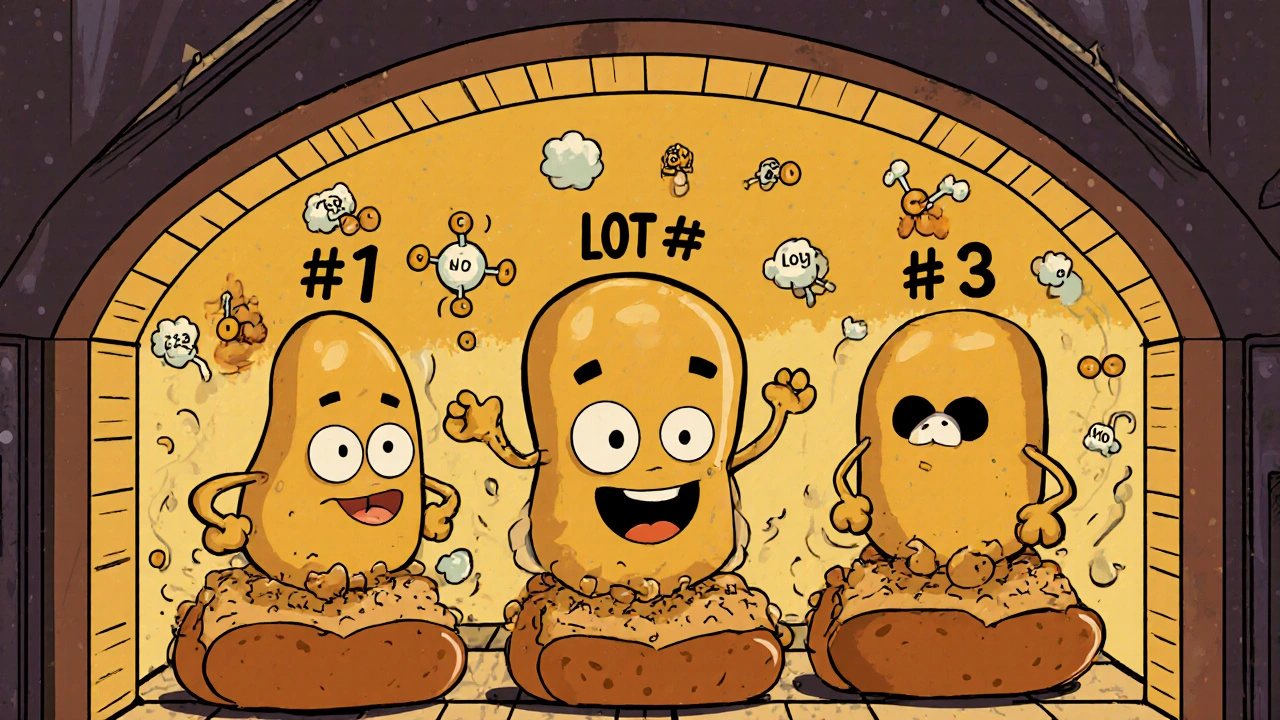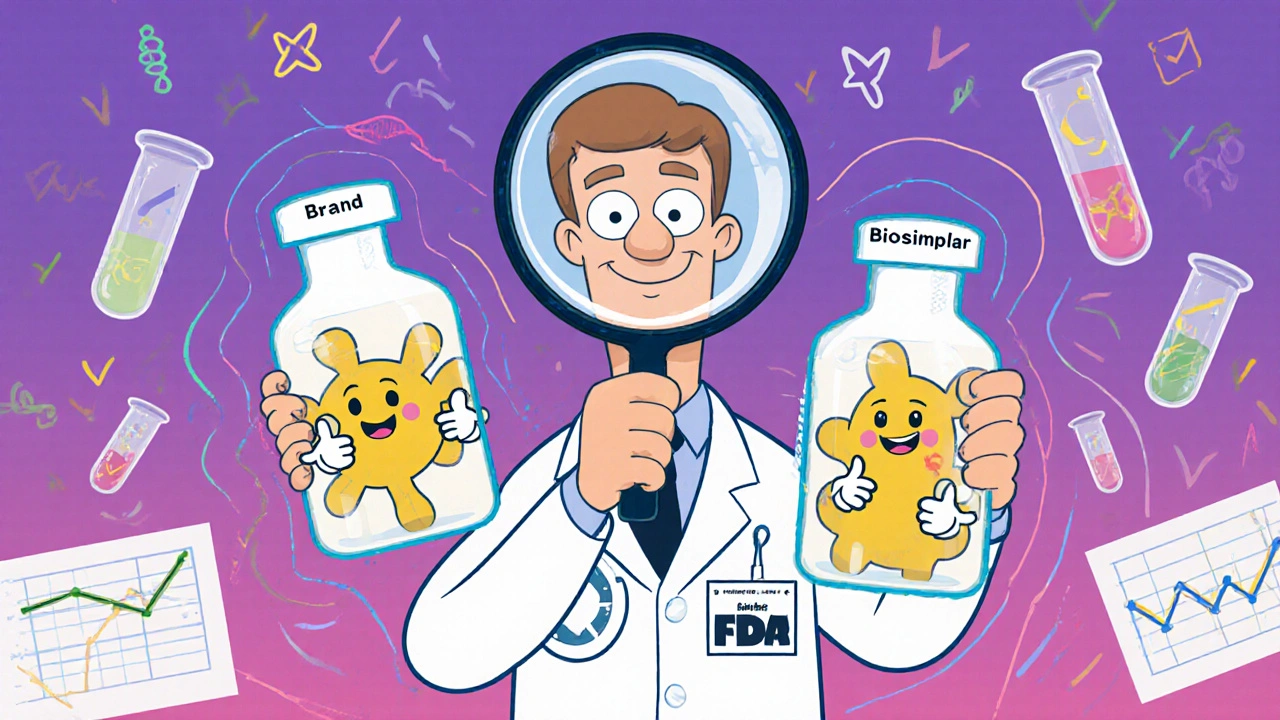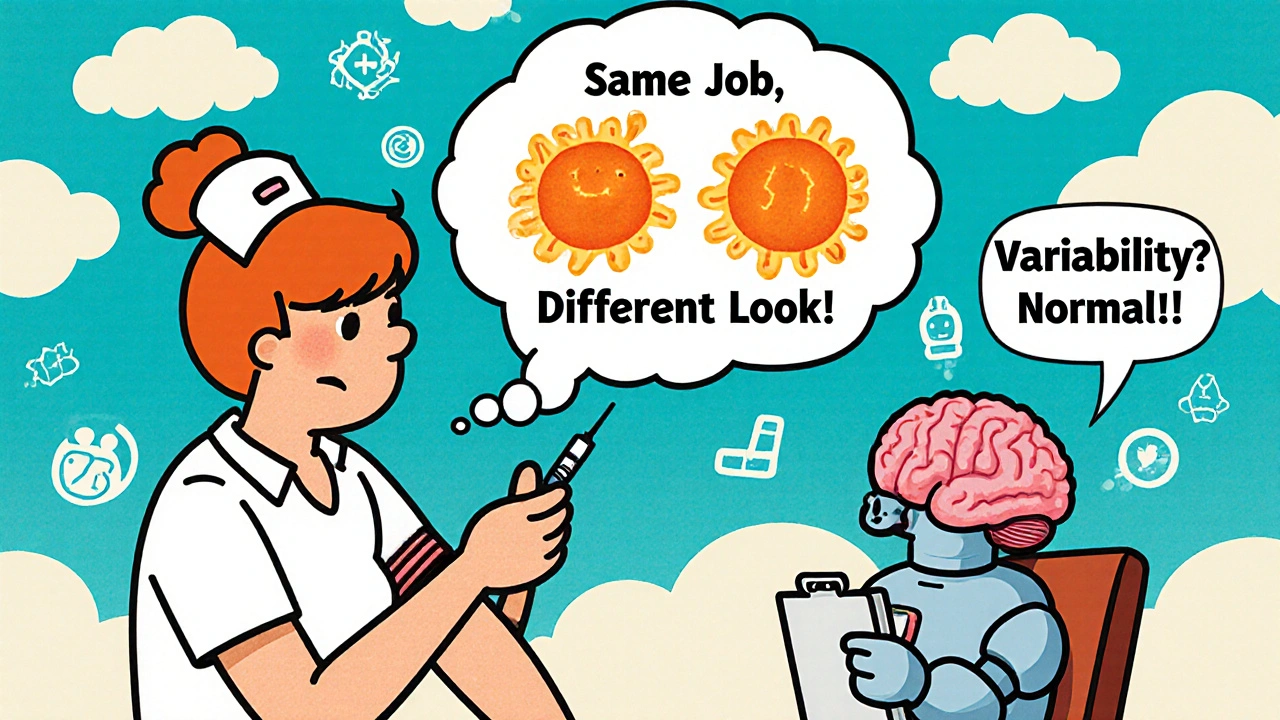Lot-to-Lot Variability in Biologics and Biosimilars: What You Need to Know

When you take a medication, you expect it to work the same way every time. But with biologics and biosimilars, that’s not as simple as it sounds. Unlike a pill you can weigh and measure down to the microgram, biologics are made from living cells - and those cells don’t make perfect copies. Every batch, or lot, of a biologic drug contains millions of slightly different versions of the same protein. This isn’t a mistake. It’s normal. It’s called lot-to-lot variability.
Why biologics are never identical
Small-molecule drugs, like aspirin or metformin, are made in a lab using chemical reactions. If you follow the same recipe, you get the same molecule every time. That’s why generics can be exact copies. But biologics? They’re grown inside living cells - yeast, bacteria, or mammalian cells. These cells are alive. They respond to tiny changes in temperature, nutrients, pH, and even the air they breathe. The result? No two batches are exactly alike. The FDA explains it plainly: a single lot of a biologic can contain millions of slightly different protein versions. Some might have extra sugar molecules attached. Others might have a single amino acid swapped out. These are called post-translational modifications - mainly glycosylation, deamidation, or oxidation. They’re not flaws. They’re biological noise. Think of it like baking sourdough. Two loaves from the same recipe, same oven, same baker, still taste different. One might be tangier. Another might rise higher. That’s lot-to-lot variability. And just like with sourdough, the goal isn’t perfection - it’s consistency in how it performs.Biosimilars aren’t generics - and here’s why
You’ve probably heard that biosimilars are the “generic version” of biologics. That’s misleading. The FDA explicitly says: Biosimilars are not generics. Generics must be chemically identical to the brand-name drug. Biosimilars must be highly similar - with no clinically meaningful differences in safety, purity, or potency. That’s a huge difference. To get approved, a biosimilar maker must prove their product matches the reference biologic across hundreds of analytical tests. They compare protein structure, sugar patterns, how the molecule folds, how it binds to targets, and how it behaves in the body. They test multiple lots of both the reference product and their own. If the variation in their product falls within the range seen in the original, they pass. This isn’t just paperwork. It’s science. And it’s expensive. That’s why biosimilars cost less than the original biologic - but not as much as a generic pill. The manufacturing and testing alone can cost hundreds of millions of dollars.How regulators handle the variability
The FDA doesn’t expect zero variation. They expect manufacturers to control it. Every biosimilar application must include a detailed strategy for managing lot-to-lot variability. This includes:- How the manufacturing process is monitored in real time
- Which analytical methods detect changes in protein structure
- What limits are set for acceptable variation
- How changes in raw materials or equipment are handled

What this means for labs and testing
Lot-to-lot variability doesn’t just affect patients. It hits labs hard. When a lab switches to a new lot of a reagent used for blood tests - say, to measure HbA1c for diabetes - they can’t assume the results will be the same. A 2022 survey found that 78% of lab directors consider reagent lot changes a major challenge. Why? Because quality control materials don’t always behave like real patient samples. A control sample might show no change between lots, but patient results could shift by 0.5% - enough to affect treatment decisions. To catch this, labs use statistical methods. They test 20 or more patient samples with duplicate measurements. They compare the new lot’s results to the old one. If the difference is bigger than what’s expected from normal lab error, they pause the switch until they understand why. This takes time. In smaller labs, verifying new reagent lots can eat up 15-20% of staff time each quarter. And if they miss it? A patient’s HbA1c might look higher or lower than it really is. That could lead to wrong insulin doses - or worse.Why this variability is actually a good thing
It sounds scary, right? Millions of slightly different proteins in one shot. But here’s the twist: without this variability, we wouldn’t have these drugs at all. Monoclonal antibodies for rheumatoid arthritis, cancer drugs that target specific tumor markers, enzymes for rare metabolic disorders - none of these could be made with chemical synthesis. They’re too big, too complex, too fragile. Only living cells can build them. The real win isn’t eliminating variability. It’s learning to manage it. Thanks to advances in mass spectrometry, AI-driven analytics, and better process controls, manufacturers today can detect changes that were invisible 10 years ago. They can tweak fermentation conditions to nudge the protein toward the most stable, effective form. And the result? More affordable treatments. More access. More options for patients.
steve o'connor
Had no idea biologics were this messy. I thought generics meant exact copies, but this makes sense - living cells aren’t robots. My uncle’s on a biosimilar for RA and he’s been fine, but I get why people are nervous. The sourdough analogy? Chef’s kiss. 🍞